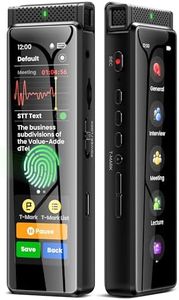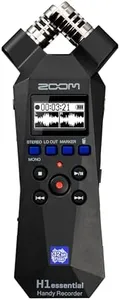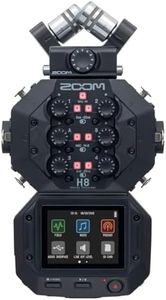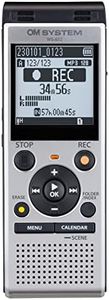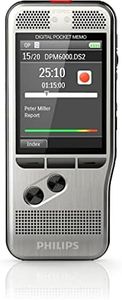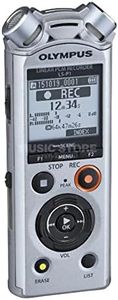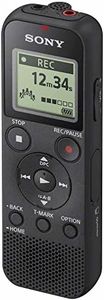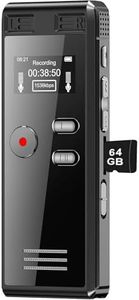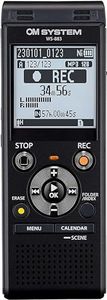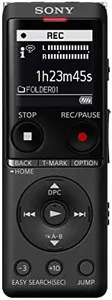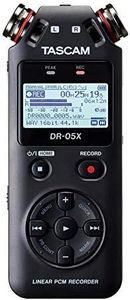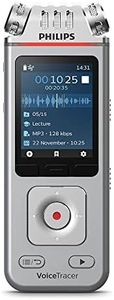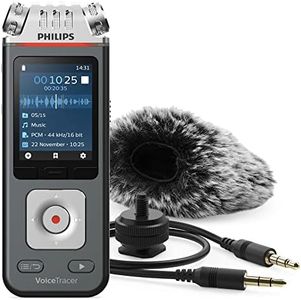We Use CookiesWe use cookies to enhance the security, performance,
functionality and for analytical and promotional activities. By continuing to browse this site you
are agreeing to our privacy policy
10 Best Voice Activated Recorders
From leading brands and best sellers available on the web.Buying Guide for the Best Voice Activated Recorders
Choosing the right voice-activated recorder is all about finding a balance between the features you need and the simplicity you want. Think about what situations you'll use it in, how long you'll need to record, and how you'll manage the files afterward. Understanding the technical features can help you avoid buying something that is either too simple or much more complicated than you need.Activation SensitivityActivation sensitivity refers to how easily the recorder starts recording when it detects sound. This is important because it helps the recorder pick up even quiet or distant voices, or prevents it from recording unnecessary background noise. Some recorders let you adjust this setting. A higher sensitivity is best if you'll use the recorder in quiet environments, whereas a lower sensitivity is better for noisy areas to avoid endless recordings of background chatter.
Recording Quality (Bitrate)Recording quality is often described by the bitrate or the format of the audio file. Higher quality recordings (higher bitrate) sound clearer and more natural, which is great for interviews or important conversations, but they use more storage space. Lower quality recordings take up less space but may sound muffled or unclear. Decide based on your needs—if you'll be transcribing, higher quality is better, but for basic note-taking, lower settings are fine.
Storage CapacityStorage capacity means how much audio the device can hold before you need to move files to another place or delete old recordings. This is often listed in hours of audio or number of files. If you plan to record long meetings or lectures frequently, more storage is helpful. If you'll transfer files to a computer regularly, you can get by with less.
Battery LifeBattery life determines how long the recorder can operate on a single charge or set of batteries. Longer battery life is handy if you need the recorder to manage hours of recording without interruption, such as during conferences or long days out. If you'll only record for brief periods, this is less crucial, but always make sure the battery life matches your typical usage.
File Format CompatibilityThis refers to the types of audio files your recorder can create, like MP3, WAV, or others. Some formats are easier to play or share on different devices. MP3 files are smaller and compatible with most devices, while WAV files are larger but offer better quality. If you want easy sharing, MP3 is good. If you want the clearest possible sound or need to edit audio, look for WAV support.
Portability and SizeSince voice-activated recorders are often used on the go, their size and weight matter. A smaller, lighter device is easier to carry in a pocket or bag. On the other hand, larger devices might offer bigger buttons and screens for easier operation. Think about where and how you'll use it and choose a size that matches your routine.
Connectivity OptionsConnectivity options determine how you transfer recordings to your computer or phone, such as USB ports, Bluetooth, or removable memory cards. If you want quick, hassle-free transfers, look for a device with a built-in USB plug or wireless options. If you're happy to use cables or memory cards, any basic connection will do.
